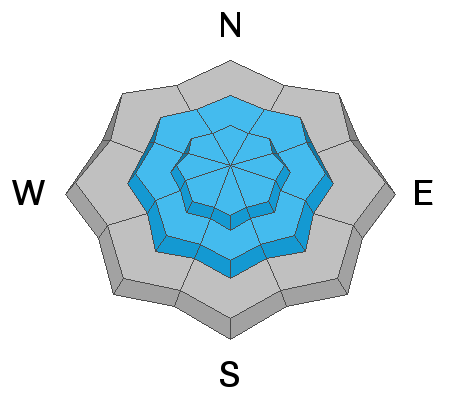Forecast for the Ogden Area Mountains

Issued by Nikki Champion on
Thursday morning, February 24, 2022
Thursday morning, February 24, 2022
A MODERATE danger exists in the mid and upper elevations. The danger is for fresh wind drifts on all aspects but most pronounced on the north to the west to south-facing slopes. In isolated terrain, these drifts may step down into older weaker snow on the northwest to east-facing slopes. Human triggered avalanches are possible.
The remaining aspects and elevations have a LOW danger.

Low
Moderate
Considerable
High
Extreme
Learn how to read the forecast here





